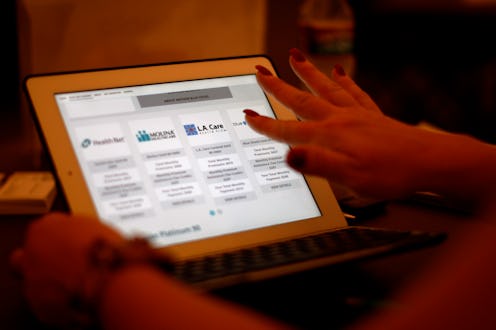News
Obamacare's Deadline Day: Is It Ready?
Saturday marks the arrival of President Barack Obama's self-imposed deadline to get the Obamacare website up and running, and the question on everybody's mind is: will it work? A lot rides on Healthcare.gov's performance this weekend — the administration promised that by November 30, the website would be functional for the "vast majority" of the users, and any repeat of the delays, crashes and error messages that users found when it launched in October will fuel the Republican party's disdain towards the healthcare reform. It's not clear that the administration is confident. On Friday, the Centers for Medicare and Medicaid Services (CMS) announced that the website was going to be taken down for 11 hours, going back up only by 8 a.m. EST on Saturday, much longer than the usual 7-hour shutdown period. And at a White House briefing on Tuesday, Jeff Zients, a former administration official who is now leading the efforts to fix the website, said that teams were working round the clock in order to prepare for the surge of visitors expected Saturday. According to officials from the CMS, the system is ready for roughly 50,000 users to be online at the same time — which, although it meets the administration’s goal and would be an improvement, doesn't leave a lot of wiggle room for a large increase in traffic. At the same time, though, Zients said that over 300 bugs have been dealt with, and it's expected that over 800,000 people will be able to successfully go onto HealthCare.gov each day.
"Inevitably, as more and more users use the system — which they are every day — we find some new [bugs]," he said. "But for the most part, they're not nearly as significant as the original bugs. What we are comfortable with is that the 800,000 consumer visits a day will handle the demand across the coming months."
But certain problems remain — the administration said earlier this week that small business will have to wait until next year in order to be able to enroll online (they can sign up in other ways, however), and some find the idea of the website functioning at 80 percent capacity unconvincing. The president of Virginia-based software developer FMS Inc told CNN: "I don't know how to build something that's only 80% complete. I don't even understand how that works."
The website's sputtering roll-out has of course given ample ammunition to the healthcare-reform-hating GOP, whoe remain firmly against the sweeping law. "We've been down this road before as officials looked us in the eye for months, pledging to the American people that everything was 'on track' and we now know with the chaos behind the scenes that it was 'on track' for disaster," GOP Rep. Fred Upton of Michigan, chair of the House Energy and Commerce Committee, said Friday. "What reason do we have to believe things will be different now?"
The President himself has stayed loyal to his signature law, however, in spite of poll numbers sliding significantly after individual policy cancellations undermined his continued promises that people would be able to keep their current coverage. "I continue to believe and [I'm] absolutely convinced that at the end of the day, people are going to look back at the work we've done to make sure that in this country, you don't go bankrupt when you get sick, that families have that security," Obama said. "That is going be a legacy I am extraordinarily proud of."
According to a CNN/ORC International poll released Wednesday, most Americans agree with the President, at least insofar as they believe that the current Obamacare problems can be solved. And early figures suggest that young people — the healthcare law's key target group — haven't been scared off by the website's hiccups. Twenty-three percent of those enrolled in California's Obamacare exchange are between 18-34, and other states suggest similar figures. The major test will be next month, though — in order to get coverage starting on January 1, people will have to have signed up by December 23. The administration is hoping that they'll have 7 million consumers by then.
